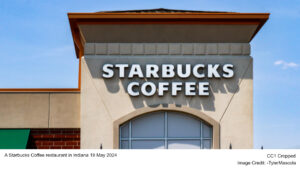Retail giants Target and Walmart recently announced their financial outcomes, showcasing how American shopping habits are evolving as the holidays approach. Both companies revealed that consumers are increasingly value-focused, a reflection of economic pressures that have seen many Americans tighten their budgets.
- Economic Pressures Reshape Spending: Higher interest rates, student loan repayments, and inflation are prompting consumers to prioritize essential purchases over discretionary items.
- Target’s Challenges and Innovations: Persistent inflation has slowed Target’s sales of non-essentials, but its partnerships and experiential retail strategies aim to draw customers back to physical stores.
- Walmart’s Winning Strategy: By lowering grocery prices and enhancing convenience through pickup and delivery, Walmart attracts value-conscious shoppers from all income levels.
- Holiday Spending Outlook: Both retailers’ strategies, from affordability to in-store experiences, will shape consumer behavior as the holiday shopping season heats up.
Target noted that persistent food and beverage inflation has forced consumers to make challenging decisions regarding discretionary goods. For instance, buyers are postponing purchases of seasonal items like sweatshirts and denim, opting to wait until colder weather necessitates them. The retailer has observed a trend of consumers stretching their budgets and carefully selecting purchases.
Key Differences in Strategies
| Feature | Walmart | Target |
|---|---|---|
| Price Strategy | Everyday Low Prices (EDLP) | Competitive pricing with a focus on quality and style |
| Customer Base | Broad demographic, price-sensitive | Middle- and upper-middle-income families |
| Branding | Value-oriented | “Cheap chic” with designer partnerships |
| Store Layout | Functionality | Curated and aesthetically pleasing |
| Private Labels | Limited emphasis | Core focus with strong brand identity |
| E-commerce Focus | Walmart+ and aggressive online growth | Integrated omnichannel services |
Walmart, in contrast, has managed to attract customers from various income brackets by lowering grocery prices. This strategy has provided consumers with more flexibility to spend on general merchandise, reinforcing Walmart’s reputation as a value-driven retailer. By improving pickup and delivery options, Walmart has also capitalized on the convenience factor, drawing in consumers seeking efficient shopping experiences.
Economic pressures are evident as shoppers face higher interest rates, resuming student loan repayments, increased credit card debt, and reduced savings rates. This environment has left many with less discretionary income, prompting them to make trade-offs in their budgets.
Walmart’s approach of appealing to both high- and low-income consumers has proven effective. It has found a niche by offering affordable groceries while also catering to those seeking value on everyday essentials. The company’s commitment to providing low-cost options has resonated with customers who are navigating increased living costs.
While Target has faced challenges, it continues to innovate and adapt. The retailer’s focus on experiential retail aims to create engaging in-store experiences, enticing customers to visit physical locations despite the convenience of online shopping. Partnerships with brands like Starbucks and Ulta have helped Target reach consumers in search of items not traditionally associated with the retailer.
The retail landscape remains competitive as both Target and Walmart strive to capture consumer attention. As holiday shopping intensifies, these companies’ strategies will likely play a significant role in shaping consumer spending trends.
Business Strategies of Target and Walmart: A Comparative Analysis
Target and Walmart are two of the largest retail chains in the United States, but they employ distinct business strategies to cater to different customer bases and achieve their financial goals. Both companies leverage their extensive store networks and online presence to dominate the retail market, yet their approaches to pricing, branding, and customer experience set them apart.
Walmart’s Business Strategy
Walmart focuses on low prices, high volume, and operational efficiency. Its strategy revolves around catering to price-sensitive customers and offering a broad range of products in various categories.
1. Everyday Low Prices (EDLP)
Walmart’s primary value proposition is its Everyday Low Prices strategy. By negotiating aggressively with suppliers and maintaining lean operations, Walmart minimizes costs and passes the savings on to consumers.
2. Global Supply Chain Efficiency
- Walmart operates one of the most advanced supply chains in the world.
- It uses sophisticated logistics, just-in-time inventory systems, and technology-driven analytics to optimize inventory and reduce waste.
3. Broad Product Assortment
Walmart offers a wide variety of products, including groceries, apparel, electronics, and household goods, targeting customers across diverse demographics.
4. Store Formats and Expansion
- Walmart operates Supercenters, Neighborhood Markets, and Sam’s Club locations to cater to different shopping needs.
- International expansion remains a significant focus, particularly in emerging markets.
5. Omnichannel Integration
- Walmart has invested heavily in e-commerce and pickup services to compete with Amazon.
- Its Walmart+ membership program offers free shipping, discounts on fuel, and other perks.
6. Focus on Cost Leadership
Walmart’s scale allows it to maintain its position as a cost leader, outcompeting smaller retailers and drawing customers away from rivals through aggressive pricing.
Target’s Business Strategy
Target positions itself as a value retailer with a focus on quality, style, and customer experience. While it also aims to keep prices competitive, Target emphasizes differentiation through its branding, product offerings, and store experience.
1. Differentiation Through Design and Quality
- Target markets itself as a “cheap chic” retailer, offering stylish and affordable products.
- Exclusive partnerships with designers and brands (e.g., Magnolia by Chip and Joanna Gaines) enhance its appeal to middle- and upper-middle-income shoppers.
2. Private Labels and Exclusive Brands
- Target has a strong focus on private label brands, such as Cat & Jack, Good & Gather, and Up & Up.
- These exclusive products provide higher profit margins while reinforcing Target’s image as a destination for quality and affordability.
3. Customer-Centric Experience
- Target stores are designed to provide a pleasant shopping experience, with clean layouts and well-curated product displays.
- The company invests in employee training and offers better wages than many competitors, contributing to better in-store service.
4. Focus on Suburban Markets
- While Walmart operates in rural and urban areas, Target primarily focuses on suburban neighborhoods, targeting families and millennials.
5. Omnichannel and Digital Growth
- Target has successfully integrated e-commerce with its store operations through services like Drive Up and Order Pickup.
- Its partnership with Shipt enables same-day delivery, competing with Walmart and Amazon in the convenience space.
6. Community Engagement and Sustainability
- Target has made sustainability a core part of its strategy, with initiatives to reduce waste, use renewable energy, and offer sustainable products.
- It also invests in communities through charitable giving and inclusive hiring practices.







Be First to Comment